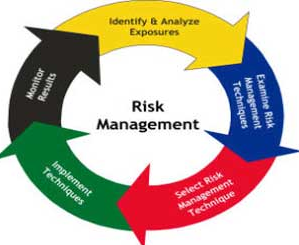what is Risk management in the software process model?
Risk management in the software process:
Risk management is fast becoming an important job for project managers.
 |
| Risk Management of se |
This includes expected risks that affect the project's schedule or quality
Software is developed and one step at a time to avoid risks (Hall, 1998)
(Old, 1999) Documenting the results of a project risk analysis
Plan with an analysis of the consequences of a risk. Effective risk
It is easy to deal with problems and make it easier to talk to them.
Unacceptable budget or schedule error equipment.
Simply put, you don't need to think about anything dangerous.
The Risk Project is developing software that has been developed
Organization. Therefore, there are three types of risk.
1. Project Risks Risks that affect project schedules or resources. An example might be a car designer.
2. Product hazards are hazards that affect the quality or performance of software
Preparing. An example might be the failure of buyer components
Performing as expected from the process.
Business. Business risks are risks that affect the organization's growth or acquisition
Software For example, introducing a competitor to a new product is a business risk.
Indeed. These types of threats overlap. If an experienced programmer skips a project, it can be a project risk as system delivery may be delayed.
It can also be a hazard to the product because the revenge cannot be so experienced anymore
So there may be programming errors. After all, it can be a business risk
Programmer experience is not available for future business bidding.
The project that can be affected depends on the project and the organization
The environment in which the software is being developed. However, many risks are universal - some of the most common risks are shown in Figure 5.9.
Risk management is especially important for software project
this is also important for risk management in software process models so for, as the software process is designed in this model of software process in software engineering.
Individual capabilities and abilities:
Depending on software development, individual capabilities and changes in their needs
Due to changes in customer requirements. You have to assess the risks, understand
Explain the impact and action of these risks on the project, product and business
To avoid these dangers l. You may need to prepare emergency plans so that, if
If there are risks, you can take immediate action.
The risk management process is described in Figure
 |
| Risk management in software process |
. It involves several steps:
1. Risk Identification Potential project, product and business hazards have been identified.
2. Risk Analysis The probability and consequences of these risks are assessed.
R. Risk planning to deal with risk by either reducing or minimizing it
This is having an impact on the project.
R. Risk monitoring is the constant assessment of risk and the risk mitigation plan
More risk information is reviewed as it becomes available.
Like project planning, the risk management process is repetitive
The process continues throughout the project. Once the initial set of plans will be done
Developed, the situation is monitored. For more information on the risks
Becomes available, risks need to be reconnected and new priorities need to be set.
Risk avoidance and emergency plans can be changed as new risk information emerges.
You should document the results of the risk management process at a risk
The management plan should discuss the risks facing the project, the analysis of those risks and the plans needed to handle those risks.
Where appropriate, you should also include in the results of the risk management process plan to activate a specific emergency plan if there is a risk.s
Hereditary uncertainty that most projects face. This has been narrated from Ta'in alone
Difficulties in estimating requirements, time and resources.
Identification of risk in software process :
Risk identification is that the initiative in risk management. it's to try to to with exploring the potential dangers of this project. in theory , they ought to not be evaluated
Preferred at this stage, although in practice, risk with very modest results
Or very low-risk risks aren't generally considered.
Risk are often identified as a team action using stress
Can be supported point of view or simply experience. to assist with the method , a checklist
Different types of risk are often used. There are a minimum of six types that are endangered
Get up:
1. Technology risks derived from software or hardware technologies
Which are used for system development.
2. People are in danger who are related to people within the development team.
Organizational hazards Risks derived from the organizational environment
The software is being developed.
Tools. There are vulnerabilities to tools derived from CASE tools and other supporting software.
Used for system development.
5. Requirements are susceptible to changes in customer needs
And the process of handling needs changes.
6. Estimates of Risks Risks derived from management estimates of system features and therefore the resources required to create the system.
the provided picture.
provides some samples of potential risks in each of those categories. When
You have finished the method of identifying the threat, you ought to have an extended list of threats
Which can occur and which may affect the merchandise , process and business.
This is very intersting topic so for, so if you want to join us and want more knowledge about information technolody like this article related to software engineering and its software process, so kindly keep visiting our site to get more knowledge in this phase of knowledge. click here www.knowledgehub92
